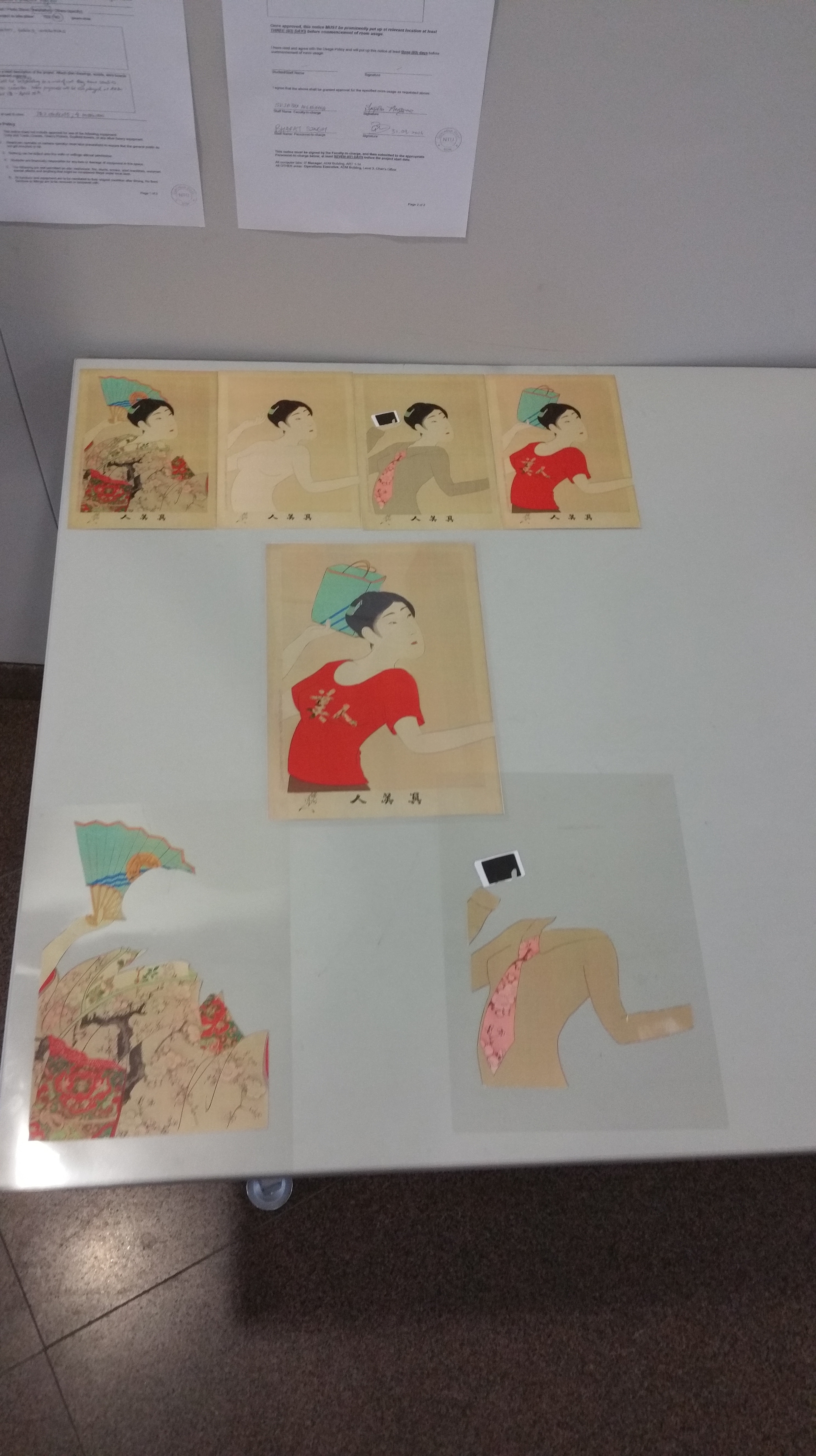Initially, I believe like many groups, we had the idea of doing “Singapore landscape” on Japanese screens, when I first imagined the product, it thought how cool would it be! However, after attending the lecture on Japanese art, Bijingas, which was introduced during the lecture, caught my attention. I took this idea to the group and we started having discussions on how should we go about creating a visual response for bijingas. What struck me the most was the drawing style, their special postures and also the elaborate designs that we painted on the kimonos. We had ideas of changing gender (since bijingas only features females) and changing them to having expressive postures or facial expressions. The ideas weren’t coming out so well until we decided to do the difference of how women are viewed/behaved during the different era.
While we were researching, we came across this beautiful series which looks different from the original 17th-century bijingas that we were shown, the Shin Bijinga (真美人)series done in the 18th century.

“Toyohara Chikanobu: Shin Bijin 真美人 (True Beauties) – British Museum”. 2016. Ukiyo-E Search. https://ukiyo-e.org/image/bm/AN00433988_001_l.

Shin Bijin (True Beauties) Depicting a Woman Playing with a Kitten, Modelled…. 2016. “Shin Bijin (True Beauties) Depicting A Woman Playing With A Kitten, From A Series Of 36, Modelled… Giclee Print By Toyohara Chikanobu At Allposters.Com”. Allposters.Com. http://www.allposters.com/-sp/Shin-Bijin-True-Beauties-Depicting-a-Woman-Playing-with-a-Kitten-from-a-Series-of-36-Modelled-Posters_i10060894_.htm.
After more researching, we have chosen to respond with Dancing with Fan by Yosho Chikanobu.
After we decided and found what to do, our team had fun coming out with ideas. We had decided that our response will be base on the changing clothing and accessories. It is created as a “dress up” game/theme where people can switch through the style easily. Our main idea was to respond to a response. Shin bijinga was a response by the artists to the original bijinga. As we come to the 21st century, many things have changed, and now, we choose to do another new response base on the Shin bijinga.
Bjinga -> Shin Bijinga -> Shin Shin bijinga (our view)
Final Product: 新。真美人系 (New True beauties series)

Postcards included as a set!

Clothing and accessories on transparencies where people could switch them up!

What we envisioned for this was that, it could be produced, with a set of few more bijingas and also clothing and accessories from the different generation to show the change of women in different times. It could be made into a toys/ sticker object like this which allow people to change the clothes, for an interactive and hands-on experience.
It was certainly not easy trying to duplicate the unique drawing style that woodblock prints and bijingas have. I have to make sure that the linework that i did correspond with the original art and everyone else in the group (each of us did a design) so that it looks like a complete set of artwork.
It also made me appreciate how the artists in the olden days painstakingly created these amazing artworks traditionally, using woodblock printing. The designs and the intricacy of kimonos and accessories are astounding. This project also allowed me to understand more about the history of how japanese women are portrayed and the unique points of Japanese art.
For my part, on the Tshirt design, i decided to put the word “美人”on it to link it back to the original bijinga and also show how people love t-shirts that have interesting text on it. To not lose the original essence of the bijinga, the intricate patterns were recreated as patterns. The colour scheme (for T-shirt and shopping bag) was kept similar to the original bijinga.

Lastly, I really want to thank Ms. Sujatha for all the guidance and patience, I really managed to learn a lot!
